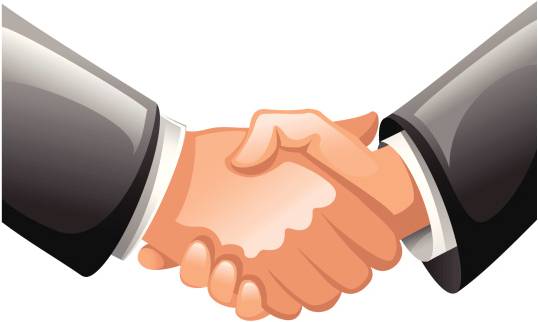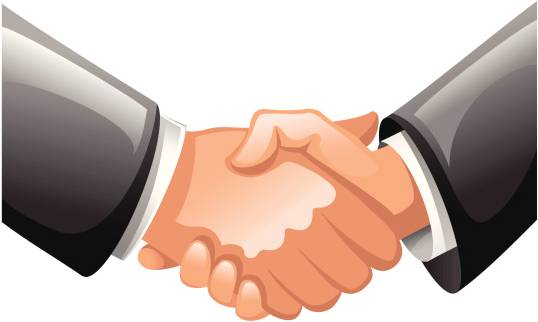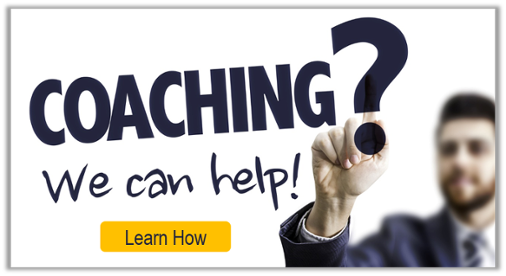4 Negotiating Strategies to Make You a More Efficient Negotiator
Are you an efficient sales negotiator? If your proposals and your contracts are always the same number, then you’ve reached 100% efficiency. But that could also mean you are leaving money on the table, which is why the customer may have been so quick to accept.
When a sale gets to the point of negotiations, there’s usually a lot of discussion and debate around the elements included in the proposal as well as the total price, which is why sellers commonly lose value between the proposal and contract stages.
If you’ve ever been in that type of situation, here are four strategies to help you avoid losing value in order to reach 100% negotiating efficiency.

1. Pick the Right Starting Point
How do you typically begin negotiation conversations? Do you offer to talk first? Or do you try to get the other party to talk first?
When we think about negotiation meetings, most customers are playing the same game about deciding who should begin the conversation. Why? Because picking the right starting point sets the conversational tone for the entire meeting.
A lot of sellers may start with a question like: “Do you have any questions about the proposal I sent in advance of our meeting?” Ideally, the customer says “Everything in the proposal looks great, we are ready! Where do I sign?”
If only making a sale could be that easy! Unfortunately, it doesn’t always happen that way.
In a dramatic example of a powerful starting point, a recent negotiation began with the one party telling the other “…you know, I was going to cancel this meeting because I am not sure we’ll be able to come to an agreement.” That changes the meeting in a hurry and focuses both parties on identifying and, if possible, jointly solving the problem that will prevent the deal from happening. The first thing it does is get to the all-important reaction that will tell you whether the other side is truly interested. It gives them the out they need to quickly and politely back out of the deal if that is their inclination anyway. But, by agreeing to continue talking they are demonstrating a willingness to find a win-win.
If you want to be a smart negotiator, then you’ll consider the right starting point as well as the risk and reward of every outcome in advance of the meeting. The exercise of visualizing each likely scenario will help you operate from a position of strength.
2. Have Two Potential Buyers
In almost every sale, there is an element of limited resources.
For example, in advertising there is limited inventory. In finance, there are limited number of hours you can book your analysts to talk to your customers. In software, there are limited number of installation-service teams or available training dates.
When limits are introduced, there is a new-found sense of urgency. Especially if there are two customers who want the same limited resource. I used this strategy to sell my house, when the market was down, in one week. By setting the right price, I received two offers on the first day of listing the house.
If I received only one offer, then the buyer has the upper hand. However, the power returns to the seller when they are “caught in the middle” between two potential buyers. All of a sudden, a typical buying process has been turned into a competition with an increased sense of urgency for both parties to try to “win the auction.”
3. Include Something to Remove
When two people or parties are negotiating, the sound of their conversation has a familiar ring. You can tell they are seriously negotiating when one party announces, “what if we take away this piece in exchange for an earlier start date?” This signals that one party is ready to make a commitment; they’re serious about finding a win-win solution.
The person who makes this suggestion is usually the one who is in control. They are being proactive. It's much better to boldly offer to remove something that is potentially a problem then it is to wait for the customer to ask you to remove it. If they ask and you cave in, then you look weak. If you suggest it first, you look strong and observant.
People who negotiate against themselves strip down the offer so much they never leave enough to spare for this strategy. To give yourself a negotiating edge, make sure you include “excludes.”
4. Sell the Dream, but Move Forward on Phase 1
Most salespeople try to sell the customer the biggest possible deal they can. The result? It takes for-ev-er to close.
When we expand the deal, especially the budget, we are making the consideration process longer and more complex. The odds of closing the sale is now reduced and the seller’s available time to prospect is gone. The result is no sale now or in the future. But, every so often, a huge sale comes in. And that is the validation needed for most sellers to continue swimming in this circle.
I, however, have found more value in closing the sale faster over getting the most money you can. Now, that doesn’t mean I happily leave money on the table. It means I am more interested in simplifying the buying process for the customer – and myself. I want the sale to close faster and be worth more over time.
My strategy is to whet the buyer’s appetite about the future upside we can potentially deliver to that customer – over time. I then get on the customer’s side when we discuss budget where I ask them how they would rationalize spending that much money on that service. From that conversation, we discuss ROI benchmarks, sometimes aggressive ones. I maintain that we can achieve those results – over time. Now that I know the benchmarks they will use for the “big” sale, I offer to scale the whole deal down to a much smaller budget, which I call phase 1. While phase 2 has hard goals against a big budget, phase 1 is a test with easier benchmarks that will serve as “proof of concept” supporting the decision to go to phase 2. The entire time I am delivering phase 1, I am talking with them about examining performance, benchmarks, and how to optimze in phase 2. This can be an effective strategy for Account Managers, but especially good for Hunters.
Remember: it is much easier for the customer to go from spending $1 to $2 than it is go from $0 to $1. First get the dollar, then grow the relationship.
About Steve Bookbinder
Steve Bookbinder is the CEO and sales expert at DMTraining. He has delivered more than 5,000 workshops and speeches to clients all over the world and has trained, coached, and managed more than 50,000 salespeople and managers. Steve continuously refreshes his training content to reflect his latest first-hand observations of salespeople across industries and regions. Through him, participants in his workshops and coaching sessions learn the best practices of today’s most successful sellers and managers across industries. Steve understands that sales is a competitive game. To outperform competitors and our own personal best results, we need to out-prospect, out-qualify, out-present and out-negotiate everyone else, not merely know how to sell. Through his specialty programs in Pipeline Management, Personal Marketing, Great First Meetings, 2nd-level Questioning, Sales Negotiating, and Sales Coaching, Steve trains sales teams to master the skills they need to overcome the challenges they face in today’s world… and keep improving results year over year.





